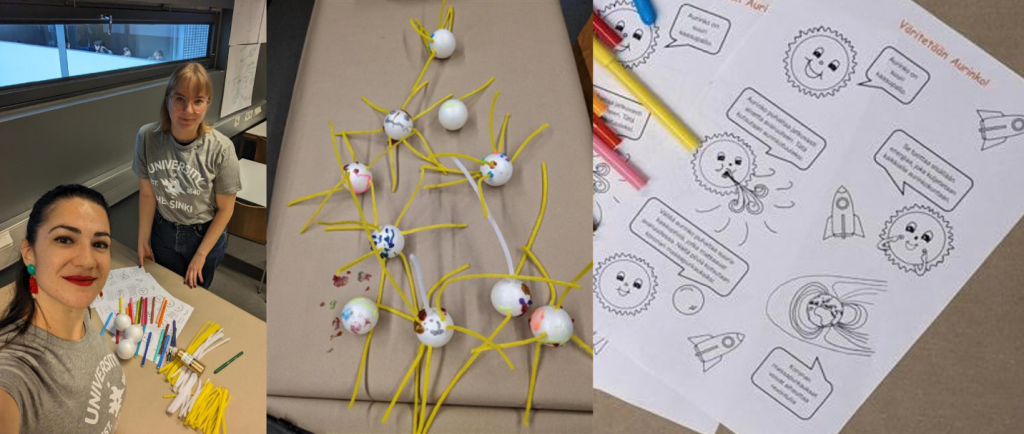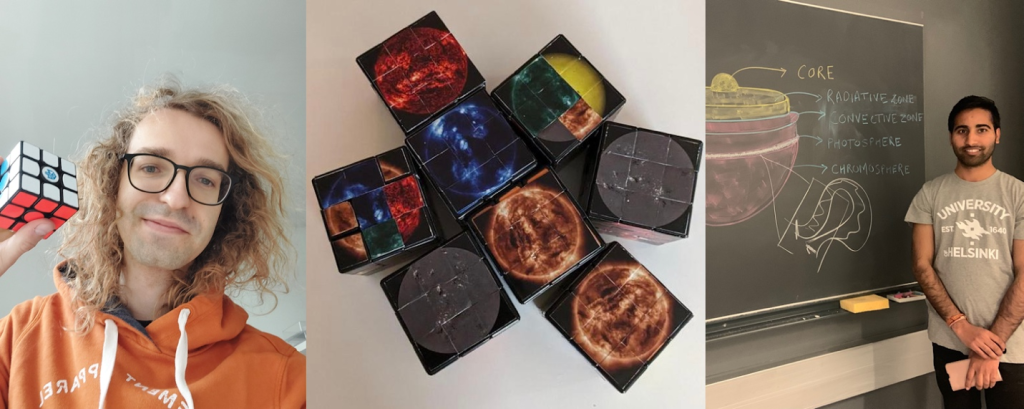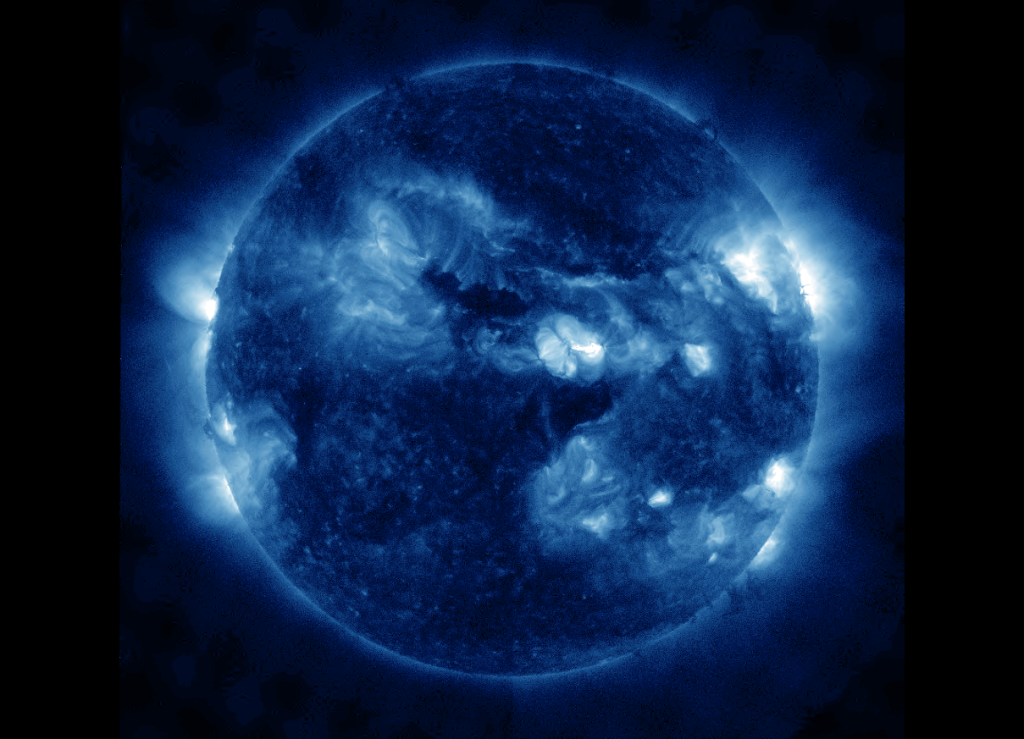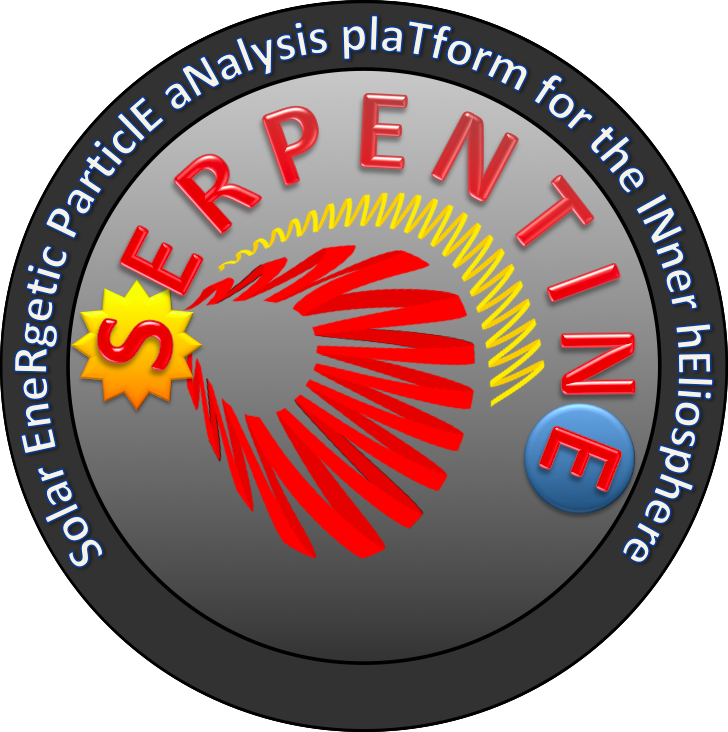How big is the Sun? What are the consequences of the gigantic plasma clouds that our nearest star unleashes into space? Why do scientists study images of the Sun with all those weird colors?
These were among the questions we focused on during our Researchers’ Night activities. The organization of the event was done within the framework of the EU project SERPENTINE, the Marie Curie network SWATNet, and the Finnish Center of Excellence in Sustainable Space (FORESAIL). The event was sponsored by the Finnish Physical Society and FORESAIL.
For kindergarten kids we first showed pictures of the Sun and its effects on us. After a flood of questions it was time for hands-on activities! We had prepared coloring pages featuring the Sun blowing the solar wind and coronal mass ejections, and the protective magnetosphere of the Earth. Kids decorated them with colored pencils, glitter glue, and space-themed stickers.
The other activity for kindergarten kids involved making their own Sun from polystyrene balls and pipe cleaners. Pipe cleaners could be seen as representing either the Sun’s magnetic field or solar rays.

The middle school students started with a Kahoot quiz. Did you know that one solar eruption hurls a mass equalling six million blue whales from the Sun into interplanetary space? Or that the dark “stains” at the surface of the Sun, called sunspots, are regions of strong magnetic field?
Next, PhD student Andreas Wagner revealed his secret skill. As a researcher Andreas works with coronal simulations but in his free time he is also competing professionally in solving Rubik’s Cubes. His personal record is… 6 seconds..!
Our cubes were not normal Rubik’s Cubes. They had solar images taken at different wavelengths glued on their sides, each telling their own story about the Sun.

In short, the Sun is a big ball of ionized gas called plasma and the plasma at different temperatures radiates light at different wavelengths. With the filters focusing on certain wavelengths, one can take images of the Sun that reveal its regions, processes and structures at different temperatures. The colors on the images featured on our cubes are not realistic but instead are selected by scientists in order to distinguish between each filter. The reason behind this is because these wavelengths are in the ultraviolet range of the electromagnetic spectrum, beyond what our eyes can see.
Here is an example: The image of the blue Sun is taken with the 33.5 nanometer wavelength filter. Such light is emitted by iron atoms in a very hot plasma in the outermost atmospheric layers of the Sun at a temperature of 2.5 million degrees! In those extreme conditions iron atoms have lost 15 of their electrons. Bright areas are called active regions, and it is where the magnetic field is strong and complex. They are the birthplaces of solar eruptions.

The Researchers’ Night was a great experience and we are sure to use these ideas again.
Materials:
Leaflet with detailed instructions on how to solve the Rubik’s Cube and how to interpret the images on each side of the cube (written by Andreas Wagner and Eleanna Asvestari): Download
Kahoot questions both in English and in Finnish: Download
Educational coloring page: Download
Team: Andreas Wagner, Daniel Price, Eleanna Asvestari, Emilia Kilpua (Coordinator), Hannu Koskinen, Jens Pomoell, Julia Ruohotie, Mayank Kumar, Venla Koikkalainen
